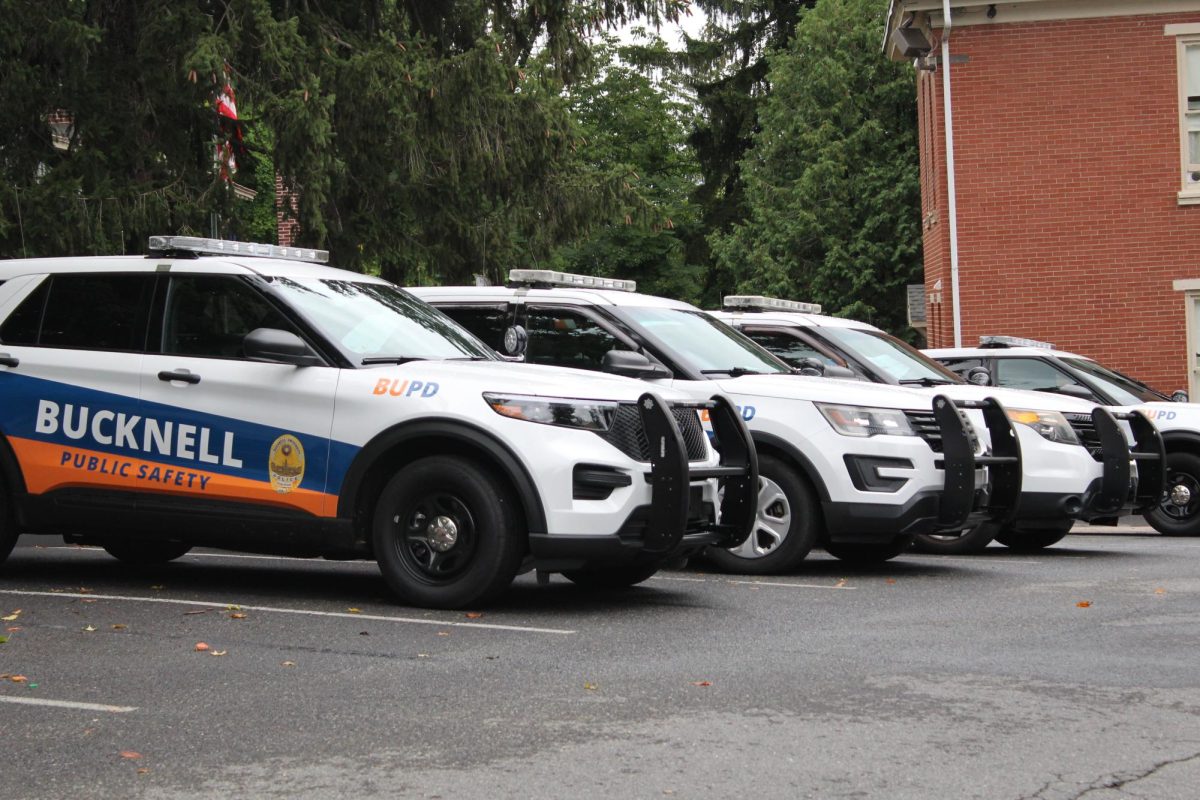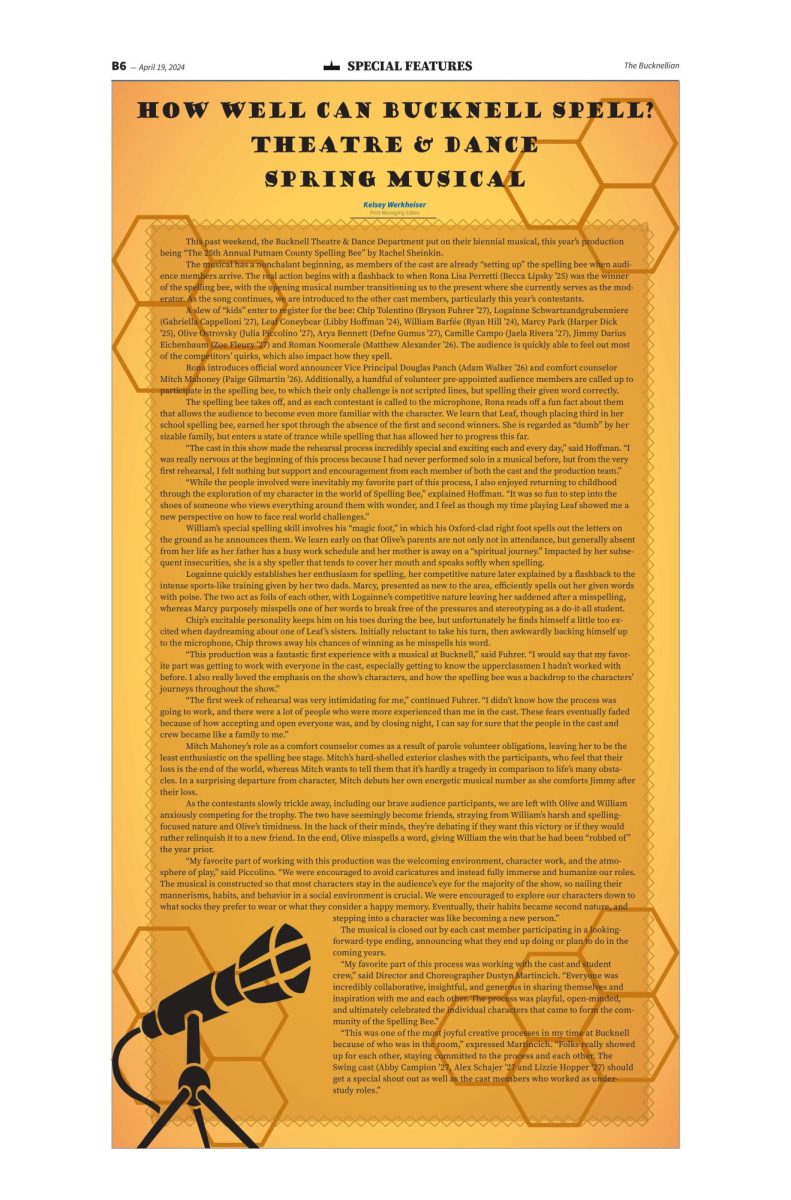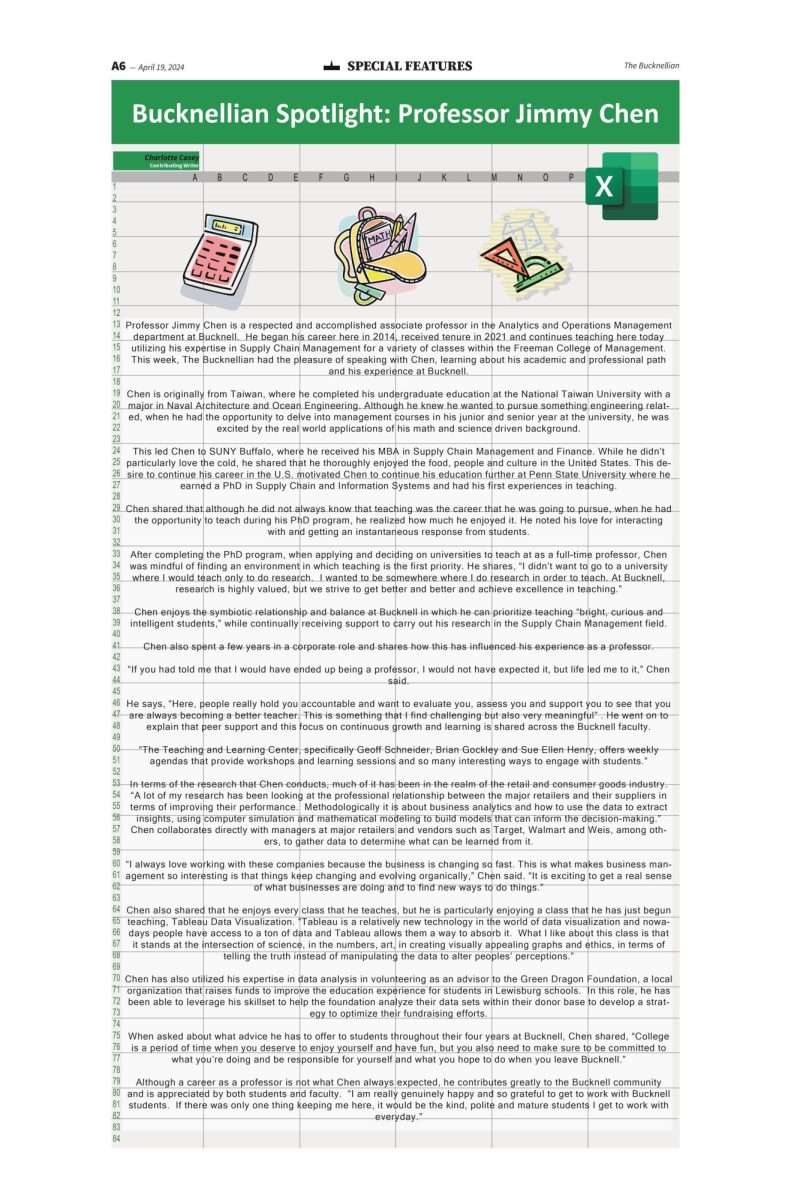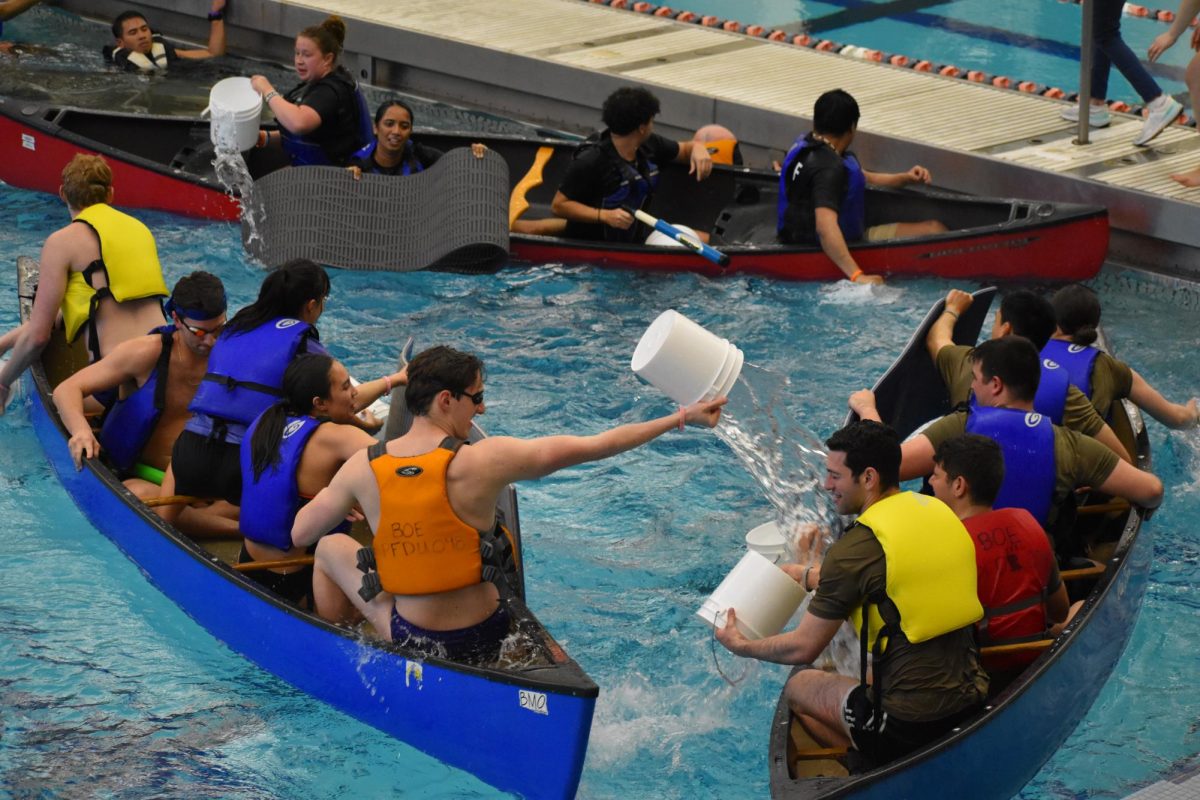Bucknell Institute for Public Policy (BIPP): Predators: At home and abroad
February 9, 2017
I just finished the HBO miniseries “Band of Brothers,” which follows an American company of World War II soldiers as they fight their way across war-torn Europe. It’s an incredibly disturbing series that displays the graphic horrors of war: the endless slaughter, the hail of bullets that could rain down at any second upon any person, the scars you can’t see. Death is indiscriminate. I was unable to truly conceptualize the destructive capacity of war until I watched this show. It depicts close combat bayonet battles in the trenches, shows mangled bodies everywhere, and follows children killing children, old enough to be mowed down by a machine gun but not old enough to buy a beer. War is not played by the same rules anymore. The combat of the future is deadly and impersonal. You don’t see it coming.
Today’s soldiers carry more ominous names, such as “Predator,” “Reaper,” and “Hellfire,” although federal employees would probably prefer that you call them “Unmanned Aerial Vehicles” (UAVs). Better known as drones, UAVs have become a crucial fixture in the U.S. military’s counterterrorism program, particularly in the targeted killing division. Equipped with cameras, missiles, and remote pilot programming, drones keep U.S. soldiers off the battlefield and out of enemy crossfire. That being said, drone warfare is just as violent and senseless as manned warfare. Drone pilots are even developing post-traumatic stress disorder at rates comparable to actual combat pilots, according to a 2013 study produced by the Armed Forces Health Surveillance Center.
The first reported CIA drone strike was in Yemen in 2002, which targeted six suspected members of the al-Qaeda network. Another strike allegedly occurred earlier that February against three men, one of whom was suspected to be Osama Bin Laden. They were posthumously determined to be civilians gathering scrap metal for sale. The process of selecting a target for drone assassination is difficult to glean from sources available online. It seems to be heavily reliant on intel from informants on the ground, many of whom are established community members. The presence of informants seeds mistrust in terrorist organizations, forcing them to change their tactics under duress. However, some CIA officers suggest that informants have their own motives for leaking information. In these situations, the practically limitless firepower of the U.S. military becomes a tool for exacting individual vendettas.
The Pentagon pilots a fleet of 7,000 drones, as far as we know, a major leap from the roughly 50 drones operated under the Bush administration. The 2016 fiscal year budget report allocated $2.9 billion to drone research, development, and procurement.
Under former President Barack Obama there were 526 reported drone strikes, killing an estimated 2,803 to 3,022 enemy combatants and 64 to 117 civilians. These figures come from a report presented by former Director of National Intelligence James Clapper. The number of civilian casualties is disputed by other non-governmental organizations, whose estimates range from 200 to 900 deaths. A human rights organization known as Reprieve claims that the U.S. military altered their definition of “civilian” so as to obscure the true number. They suggest that all military-aged men and women are recognized as “enemies killed in action” unless their innocence can be explicitly and conclusively proven.
It’s easy to look at these statistics and see them as mere numbers. Far more “combatants” are killed than “civilians,” and at first glance, that registers in our minds as “a good ratio.” These classifications create psychological distance between us, over here, and them, over there. But we cannot forget that these are people’s fathers, mothers, and children. Innocent friends and family. One civilian casualty is too many. Sacrifice is a necessary evil in war. But is war a necessary evil? By keeping ourselves safe, we are engendering an entire new generation of terrified, resentful civilians. The children who lose their friends to “sky guardians” will have nightmares, which they might channel into rage and terrorism. We might not see the blowback from our actions until these children mature into adults.
On the other hand, drones are our friends; they deliver our Amazon packages in the timeliest of fashions, they keep our kids occupied in the backyard, they compose a beautiful light show backdrop upon which Lady Gaga can perform. They’re a sign of technological progress, the inevitable evolution of robotics. They’ll take over jobs that are too dangerous or too expensive for humans. We should get used to them, right? Especially as they creep onto our police force. Two dozen police departments in the United States are authorized to use drones to protect and serve the public. This number will continue to climb, although perhaps we should make sure our human officers are capable of safe and unbiased decision-making before we dramatically increase their killing power.
What do you think about the automatization of war? With great power comes great responsibility, so says Uncle Ben. Do you trust our soldiers to rain fire from the skies? Our police force? One thing is for sure: if they send a drone after you, you won’t know until it hits you.


























